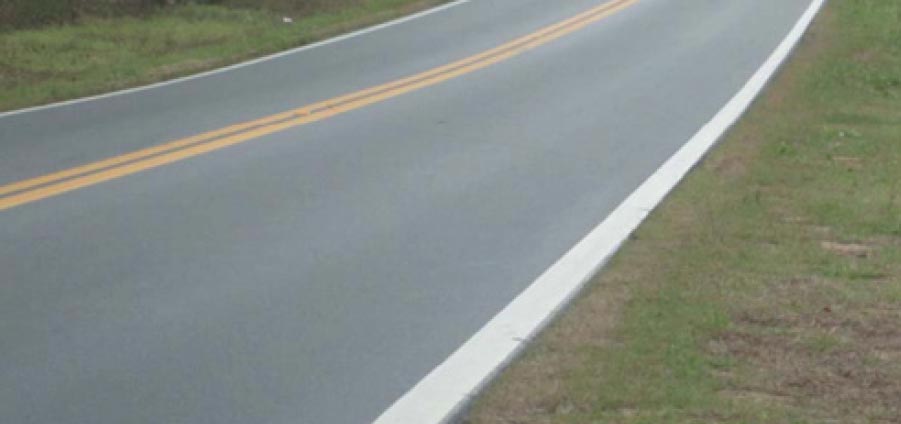U.S. Department of Transportation
Federal Highway Administration
1200 New Jersey Avenue, SE
Washington, DC 20590
202-366-4000
Roadway departures account for over half of all traffic fatalities in the United States. If drivers cannot clearly identify the edge of the travel lanes and see the road alignment ahead, the risk of roadway departure may be greater. Wider edge lines enhance the visibility of travel lane boundaries compared to traditional edge lines. Edge lines are considered ”wider“ when the marking width is increased from the minimum normal line width of 4 inches to the maximum normal line width of 6 inches.1

Source: Texas Transportation Institute
Wider edge lines increase drivers’ perception of the edge of the travel lane and can provide a safety benefit to all facility types (e.g., freeways, multilane divided and undivided highways, two-lane highways) in both urban and rural areas.2 Wider edge lines are most effective in reducing crashes on rural two-lane highways, especially for single-vehicle crashes.3 Agencies should also consider implementing a systemic approach to wider edge line installation based roadway departure crash risk factors. Potential risk factors for two-lane rural roads include:
Sources
1. Manual on Uniform Traffic Control Devices, Section 3A.06. FHWA, (2009).
2. Park et al. ”Safety effects of wider edge lines on rural, two-lane highways.“ Accident Analysis and Prevention Vol. 48, pp.317-325, (2012).
3. Potts et al. Benefit/Cost Evaluation of MoDOT’s Total Striping and Delineation Program: Phase II. Missouri Department of Transportation, (2011).
4. Abdel-Rahim et al. Safety Impacts of Using Wider Pavement Markings on Two-Lane Rural Highways in Idaho. Idaho Transportation Department, (2018).
Filter countermeasures by focus area, crash type, problem identified, and area type.
